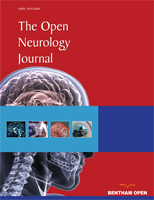
“The anticonvulsant activity of cannabinoids attracted much attention in the last decade. Cannabinoids that are currently investigated with the intention of making them drugs for the treatment of epilepsy are cannabidiol, cannabidivarin, Δ9-tetrahydrocannabivarin and Δ9-tetrahydrocannabinolic acid.
Areas covered. In this review, the authors look at the results of pre-clinical and clinical studies with investigational cannabinoids. Relevant literature was searched for in MEDLINE, SCOPUS, EBSCO, GOOGLE SCHOLAR and SCINDEX databases.
Expert opinion. Pre-clinical studies confirmed anticonvulsant activity of cannabidiol and cannabidivarin in a variety of epilepsy models. While the results of clinical trials with cannabidivarin are still awaited, cannabidiol showed clear therapeutic benefit and good safety in patients with therapy resistant seizures associated with Dravet syndrome and in patients with Lennox-Gastaut syndrome who have drop seizures. However, the full therapeutic potential of cannabinoids in treatment-resistant epilepsy needs to be investigated in the near future.”
https://www.ncbi.nlm.nih.gov/pubmed/29842819
https://www.tandfonline.com/doi/abs/10.1080/13543784.2018.1482275



 “There are records of the cannabis plant being used for medicinal purposes in ancient times, and in the 19th century it was used as an effective anti-epileptic drug (AED) in children.
“There are records of the cannabis plant being used for medicinal purposes in ancient times, and in the 19th century it was used as an effective anti-epileptic drug (AED) in children.




